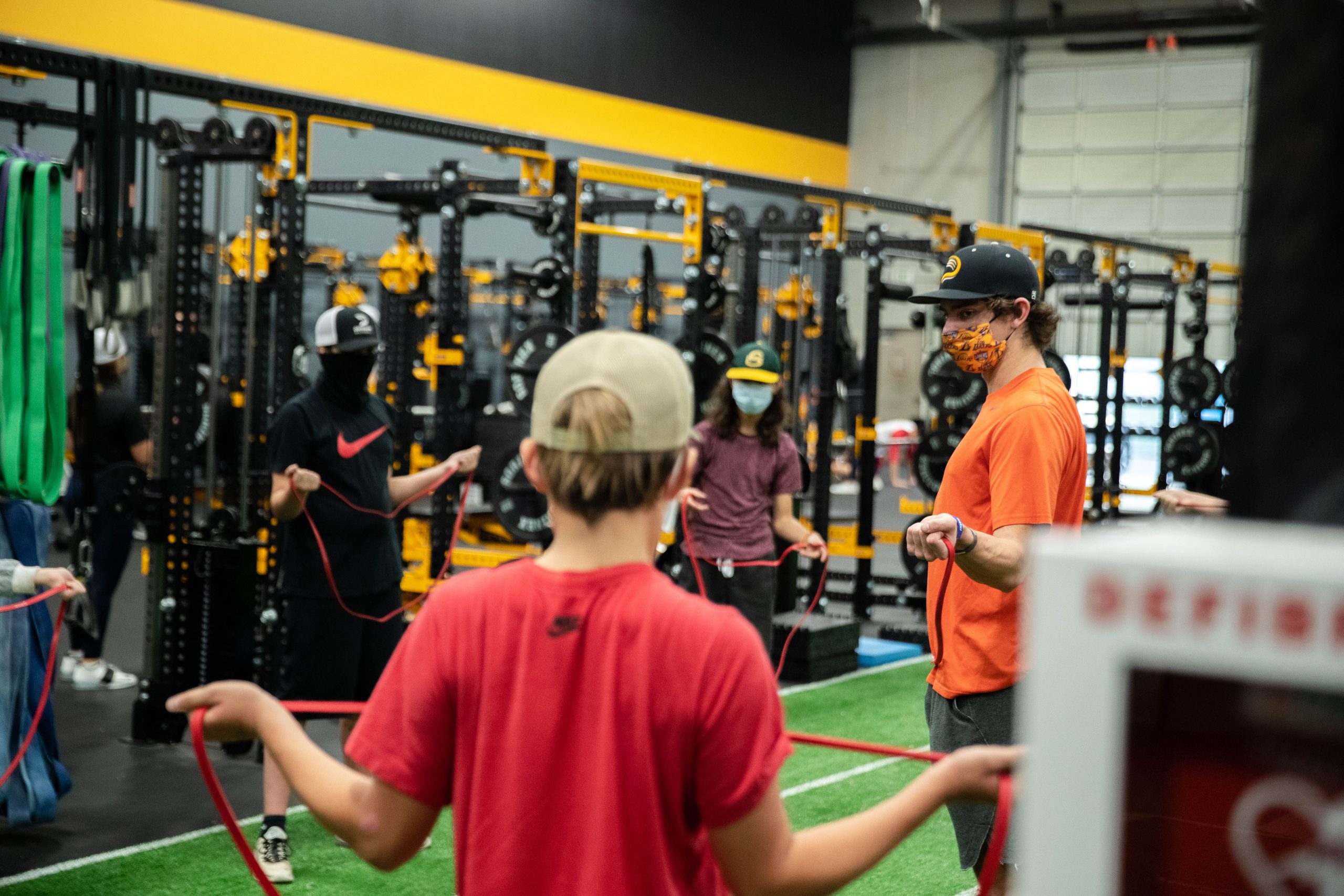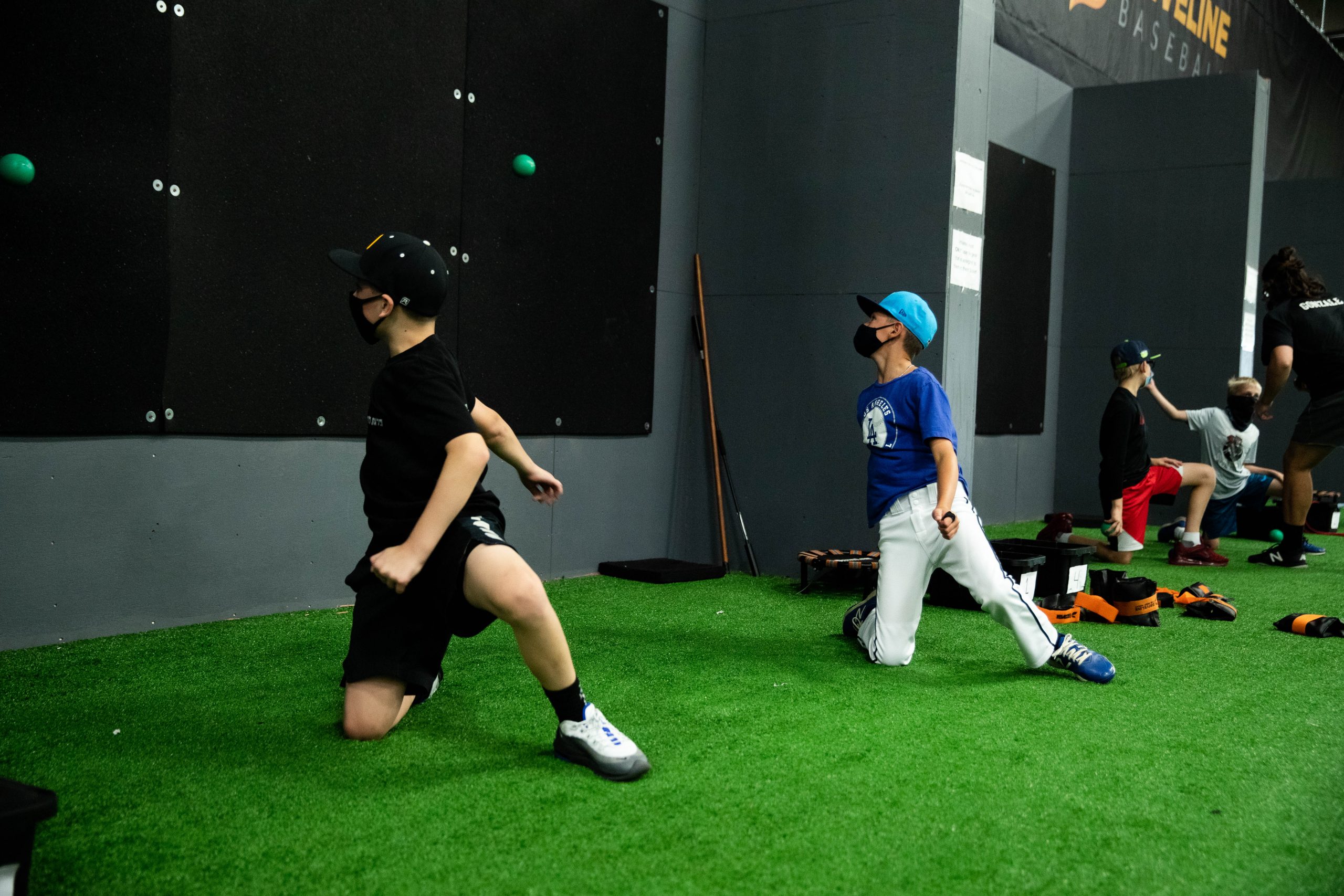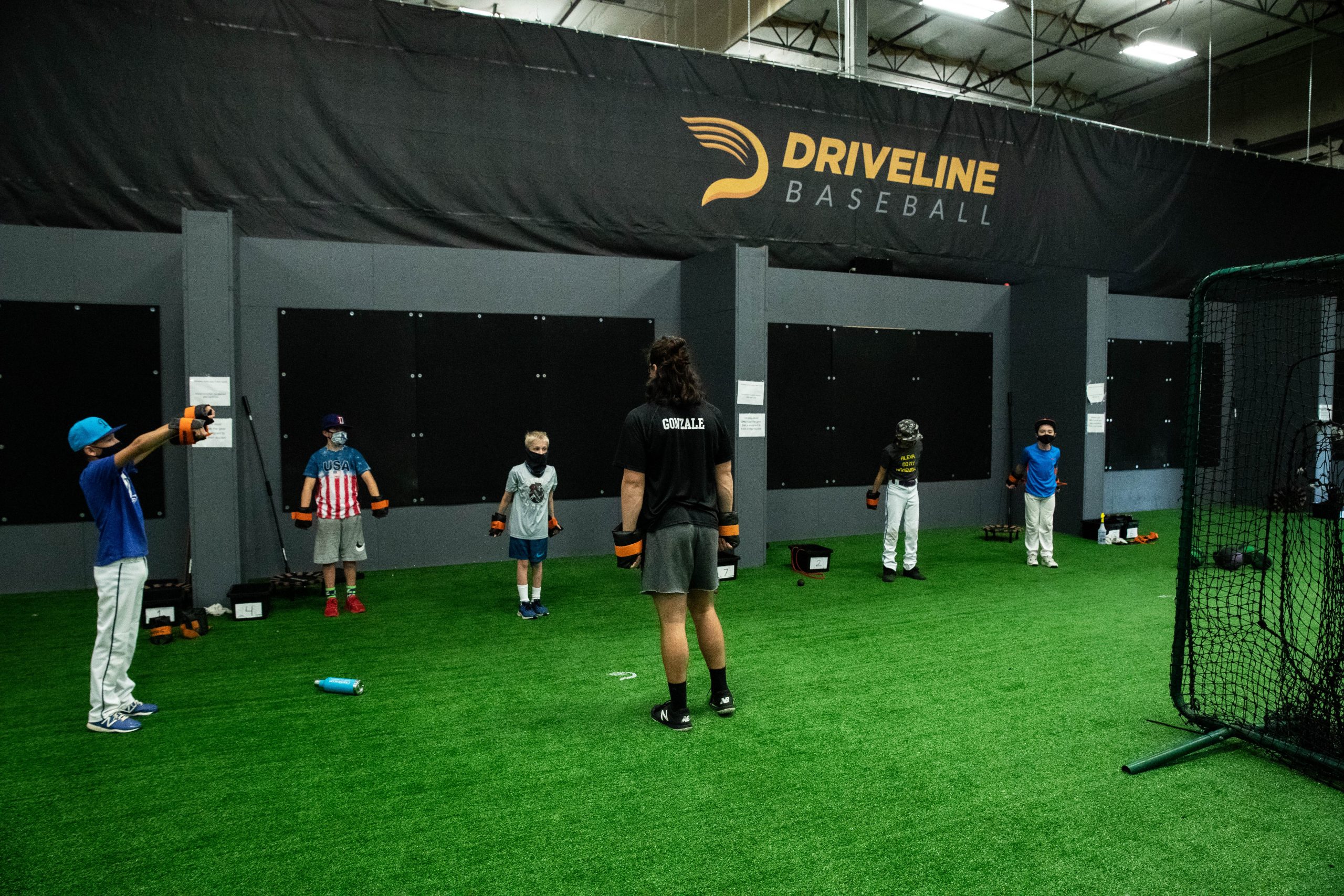How Does Driveline Academy Start “Doing Driveline”?

It seems that there are often misconceptions about the totality of what “doing Driveline” means, and even more so about how Driveline trains youth players using Driveline protocols, programming, and training equipment like our throwing Plyo Ball ®.
Yes, training programs like the Youth Intro to Arm Care and the 8-Week Throwing Program have been available (and free!) for more than half a decade, along with additional technical documents like Hacking The Kinetic Chain and its youth counterpart.
That said, these resources—while incredibly enlightening—do not often generate excitement among the general public.
I tend to understand this as a function of what naturally gets attention (and what doesn’t) in spaces like Facebook, Instagram, and Twitter, populated by well-intentioned moms and dads who just want to do the best for their kids and the kids that they coach.
You can look at some of the videos we’ve posted of youth training in the facility at Driveline, and what often gets the most attention—and views—in the social media landscape is not the foundation of arm care, arm fitness, and an integrated approach to strength and skill development.
Things like max intent throwing of baseballs and Plyo Ball ® and pull-downs are The Event—often deservedly so—but it’s important to understand that these events are the culmination of a structured program, filled with many days and weeks of training that is, in comparison, much more mundane.
To break down some of these misconceptions and provide a more all-encompassing understanding of how and why we execute our youth throwing training, we can talk specifically about what our Driveline Academy players have been doing for the first month of training with their teams.
Driveline Academy Teams
First, a little bit about selecting players on our teams: we started by bringing in players for what we called our “Grow The Game” free training sessions.
These sessions were designed to serve a dual purpose—give players who had been unable to play baseball for any length of time due to COVID-19 an opportunity to just play and have fun, and also offer players who were interested in possibly playing on a Driveline Academy team a chance to see a little bit of what our typical off-season training sessions look like.
In a 90-minute session, we focused on the throwing warm-up, throwing our Plyo Ball ® in our throwing drill series (more on this later), a hitting warm-up with medicine balls, hitting in our HitTrax cage, then finished with some strength and agility work.
That’s it.
What does that leave out? Just about everything else that makes up most conventional baseball practices or team try-outs. This was absolutely intentional for several reasons.
One is that for as much as we talk about the value of Skills That Scale, if we were to build our own teams from a more conventional standpoint—starting with core players that are capable at high leverage positions like shortstop, catcher, and pitcher, then filling out the lineup around them—we would likely ignore some of the outliers that we may see in terms of specific primary skills (throwing and hitting), and in so doing be no different than any other team.
Our intention is to do the opposite. Rather than build our teams from defensive positions 1 through 9, our intention is to build teams where all players are not only trained at all high leverage defensive positions—pitcher, catcher, shortstop, and center field—but are also given playing time at these same positions to increase each player’s likelihood of being decently competent all over the field, therefore increasing their long term viability in the game.
Certainly, all of our players will have different comfort levels and abilities that lend them a higher likelihood of success at one position than another. We can and will lean into those types of lineup choices when we are in the Performance Phase of our season in the summertime.
What we do not want to do, however, is make roster decisions in September about what players will be capable of in-game or tournament play that will happen four to nine months in the future, or make these same types of lineup decisions in February or April, restricting players to only their positions of comfort or likelihood of success, as that part of our season is definitively an Exploratory Phase, where we want and need players to learn how to play in different positions on the field.
(For more on structuring your youth season into phases, see our Youth Baseball Development certification course.)
Making lineup choices that are definitively governed by increasing the team’s chances of winning in the short term, will rob our organization, and most importantly, our players, of incredibly valuable developmental opportunities. By doing so, we are effectively presuming that we can’t train our players to be comfortable—to a reasonable degree of performance—all over the field over the course of the year. And I firmly believe that we can.
What is onboarding?
All of our Driveline Academy teams started their training with a month-long progression of what we call “Onboarding.” We occasionally throw around terms like “onboarding” without adequate consideration for the fact that most youth coaches may not know exactly how we’re using it, as in the recreational youth baseball space, this is mostly unheard of. When talking about onboarding, we are talking about a specific period of time with an all-encompassing focus on:
- Teaching players our drills
- Moving players toward drill proficiency
- Building up players’ throwing strength and volume
This is all done in an integrated and progressive fashion, which means that we are not doing any kind of high intent work—throwing bullpens, max effort catch play or max distance long toss—without first establishing the arm care, arm fitness, and mechanical efficiency driven by drill proficiency that we need to feel comfortable that players can throw in any training situation at a high level of intent, safely.
In a technical sense, this means that every week players will have three days of throwing, with two of those days being an approximate 90% RPE (rate of perceived exertion) “Hybrid” throwing workout, and one of those days being a “Recovery” workout at less than 70% RPE. We execute that program—throwing three days a week, with varying degrees of volume and intensity—for a full month before we do any type of 100% max intent throwing. The days between training should be for rest so that players are fully recovered from one training session to the next every week.
We also try to drive players toward proficiency in our throwing drill series during this period of time. While there is a huge and significant gap between technical drill proficiency and drill perfection, with a month of training, we can at the very least start to identify some of the larger flaws in any player’s performance of our throwing drills and help them eliminate or reduce the appearance of the bigger ones.
We should also note that this focus on drill proficiency is not limited to our Plyo Ball ® throwing drills but is also applied to our Jaeger Sports J-Band series and our Youth Wrist Weights. We want to install this progression of throwing warm-up and recovery as something that absolutely becomes not only a habit before any of our players actually picks up a 5oz baseball but also a precursor for any kind of throwing that comes next, whether it is long toss, catch play, pitching or—The Event—pulling down.
In total, this attachment to consistent throwing warm-up, technical drill proficiency, and throwing recovery is the non-negotiable precursor to any kind of throwing at high intent, not only for pull-downs during our off-season velocity phase but also over the course of the entire year of training and game play.
One additional aspect relevant to the need for on-boarding that should be covered is this specific moment in time, as we all continue to deal with the ramifications of COVID-19. This has given players a wide range of training and gameplay experiences, with some being much more sedentary than usual, others who have been able to play something that more closely resembles a normal season, and then some kids—perhaps with parents that value the development of Skills That Scale—who have used this time away from gameplay to focus on training and skill development.
In total, we coaches and trainers are left with a landscape where the need for careful and deliberate onboarding is even greater than normal to help all of our players get back to a similar place as it pertains to the overall stress and stimulus of throwing again.
How Do We Train Better Throwers?
There are several principles of developing baseball throwing that I think (at least I hope) we can all agree are good and beneficial for all players:
- Throwing the ball harder
- Throwing the ball accurately
- Having a healthy arm
These three primary desires for youth players and older are so basic and common that they should be universal. The problems come in when we start to get into the details of how exactly to achieve these desired outputs, in addition to whatever specific accommodations we need to make for the age and biological development of our youth athletes—who, despite any desires we have to the contrary, are simply not the same as older amateur players or adults.
Throwing the ball harder is good and is also relative to the individual player, age, and developmental level. The reason that we specifically want our players to learn how to throw the ball harder is that it necessitates that we take the time to measure how hard they are throwing the ball right now. Having taken that measurement, any positive development—whether biological progression, increases in strength or movement efficiency, or some combination of both—can be incentivized and rewarded.
Additionally, training with our Plyo Ball ® is a way to accelerate the curve for how quickly we can develop strength and more ideal throwing patterns in our youth athletes. These are both fundamental principles of overload/underload training and variable implement training.
Part of the reason that our attachment to Plyo Ball ® throwing is so strong is because of how successful a training modality it’s been proven to be for older athletes. We can also infer some other benefits from existing research that go directly toward our three principles of throwing development. Whether we refer to studies performed by ASMI or our own Driveline studies published in peer-reviewed journals, throwing our Plyo Ball ® is how our youth athletes take advantage of the same principles that have proven safe and beneficial for older players.
We throw overload balls because, compared to a 5oz baseball, heavier throwing implements generate less torque at the joint level of the thrower’s arm. Additionally, decades of research in multiple throwing sports confirm the positive benefit of training with overload implements when it comes to helping athletes develop a more efficient throwing pattern.
We throw underload balls because we want to develop the supra-maximal—basically a fancy word for the ability to move faster.
Additionally, by training with implements other than the 5oz baseball, we are taking advantage of the principles proven in research about the coordination and skill acquisition benefits of contextual interference training.
The training paradigm is to throw the ball as hard as possible, with the most efficient throwing mechanics, at the intended target, along with a structured plan for pre-throwing warm-up and post-throwing recovery. Training with Plyo Ball ® balls in our block-chained progression of throwing drills—where we move from the most constrained positions to the least constrained positions, varying ball weight along the way—allows us to feel confident that our young athletes are in a training environment that is going to drive the adaptation and development of their movement patterns in a way that is in direct alignment with how their own bodies move and function.
This is vastly superior to most conventional throwing development, which is done through a series of internal cues, or simply an instruction for the athlete to “do better”—as if the athlete weren’t already trying to perform the drill well, satisfying their own and the coaches desires for improved performance.
We believe that the best way to get better at throwing is to throw, ideally with Plyo Ball ® in a structured system that not only progressively builds up the volume and intensity of that throwing but also provides players with ample time to rest and get re-acclimated to the effort expended in training. Executing this program gives us the freedom to move into the next phase of our throwing training, where we allow players to throw at maximum intent.
More broadly, our goal is for players to learn how to move fast by moving fast because doing so benefits them in the short term and the long term. But to do so and feel confident that we can execute that program safely, we need both the time and the structure of a well-executed throwing onboarding program.
By Deven Morgan, Director of Youth Baseball


Comment section